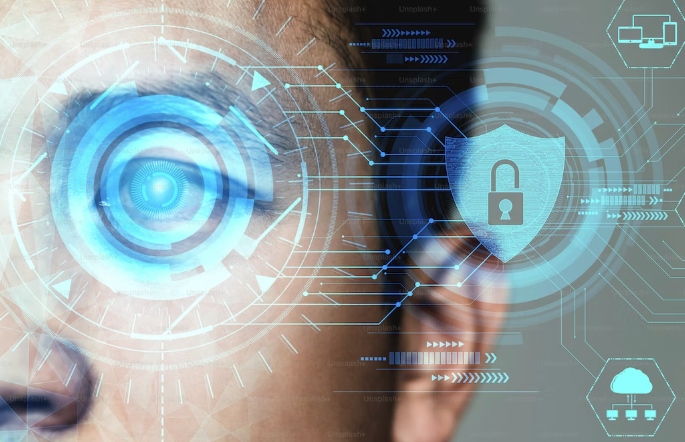Biometric Wonder

December 21, 2023
THE OTHER DAY I came in from overseas. At immigration I used the Global Entry line, as I normally do. The process was easy: a quick facial recognition scan and I was through.
Later I started wondering about that scan. Where did immigration authorities (CBP) get the biometric information used to identify me? I don’t recall signing over a scan of my face. Do you?
Not to sound paranoid, and I’m not saying we should object, necessarily. But the question is important: how do they know what we look like, and who gave them this data?
Maybe we did. It could happen when applying for a passport, and maybe a driver’s license too. It might be there in the fine print. (Those photos are awfully small, however. How much can be gleaned from them?)
Airlines, too, are beginning to use this technology to expedite boarding. Where did they get the data? If it came from those same passport or license pics, that would mean the government is sharing this information with airlines. Which is logical from a security perspective, but where is the line drawn? Does the government have the right to sell or share biometrics only with airlines, or with commercial entities in general? If so, which ones, and who gets to decide?
I don’t want this to topple into a worried rant over privacy and invasive technologies. There are enough of those out there already. Besides, it’s too late; the surveillance genie left the bottle a long time ago, and like it or not we’re stuck with the repercussions. But I’d like to know the answers.
Graphics courtesy of Unsplash and Getty Images




Leave a Comment
Maximum 1500 characters. Watch your spelling and grammar. Poorly written posts will be deleted!
14 Responses to “Biometric Wonder”
You are viewing newest comments first. Click to reverse order
Since 9/11 passports used for international travel are required to have a biometric photo. This isn’t very different from a regular photo, but it does have to meet certain standards, like e.g. you are not supposed to be smiling. That way a computer algorithm can compare your actual face with the photo in your passport, and determine if you are actually the person on the passport photo, or if you are someone else.
You handed over biometric data of your face to ‘the feds’ when you applied for your passport. The US State Department shares data with the US Department of Homeland Security :-).
‘Uncle Sam’ keeps a digital copy of your passport photo on file somewhere, and can compare it with the photo in your passport. If someone steals your passport, swaps out your picture with a picture of themselves, and then tries to travel to the US-of-A with it, they will get caught.
I don’t know about others’ faces but you’re a star, mate. It’d have been embarrassing if it didn’t recognise thee 🙂
The CBC reported [Oct. 29, 2020] that Cadillac Fairview, a real estate company behind some of Canada’s most popular malls collected “… millions of images – and used facial recognition technology without customers’ knowledge or consent…”. Cadillac Fairview said that the images were analyzed and deleted, but it was discovered that actually “the sensitive biometric information that was generated from the images was being stored in a centralized database by a third party company.” http://www.cbc.ca/news/politics/cadillac-fairview-5-million -images-1.5781735
The cow has left the barn.
Pro tip: when posing for passport or driver’s license pictures, always try to look sick, tired, and disheveled. That way you’ll look more like your picture after a long flight.
No comment on the source of the pictures, but I’ll comment on Global Entry: I absolutely love blowing by the passport lines at Immigration; the facial recognition even worked for my 7 year-old, even after we’d been warned during the GE enrollment that it likely would not work for him…
As always great topic. Just a couple of experiences
– did not travel for a few months last year and grew a decent long beard. The facial recognition outbound going to Mexico did not work at boarding. They checked the passport manually and took my picture. Next trip to Amsterdam with beard worked perfectly. As others have indicated there is a passport chip stored image and some cloud based storage with potentially multiple images as you travel more.
– Traveling through Paris and London Heathrow is the only place they asked me to remove my glasses and seem to do a retina scan in addition to facial recognition.
As always we give up a some personal freedom for minor personal and social gains till a point comes where the idea of personal freedom is becomes just that an idea from some book we read about … oh I digress..
You have a chip in your passeport with a high def version of your passeport photo inside, plus the text data and fingerprints.
Oh, you should *absolutely* be worried, Patrick. Governments and corporations get data from private biometric data brokers and then enhance it with their own information. For example, Twitter has decided to collect biometric data from calls and video calls on their platform (https://arstechnica.com/tech-policy/2023/08/x-nee-twitter-wants-to-collect-your-biometric-data-and-employment-history/). France has put together legislation that will require everyone in the country to have biometric data with the government (https://arstechnica.com/tech-policy/2016/11/france-id-database-biometric-data-60-million-citizens/). This was scary *before* the recent advancements in AI. With the recent advancements, the ability to surveil based on biometric data is going to become alarming.
CBP’s biometric facial comparison technology standardizes, automates, and enhances manual processes by making them more efficient, accurate, and secure. The Traveler Verification Service (TVS) is the cloud-based, facial biometric matching service that is the foundation for CBP’s biometric verification processes at U.S. ports of entry (POE).
TVS uses a high performing facial biometric algorithm to compare a live photo of the traveler against photographs from passports, U.S. visas, or photographs from other DHS holdings. Using data that travelers are already required by statute3 to provide, the automated identity verification process uses biometric facial comparison to verify identity and swiftly and accurately confirm others who may be inadmissible including those who have overstayed their authorized period of admission.
https://www.cbp.gov/about/congressional-resources/testimony/statement-record-assessing-cbps-use-facial-recognition-technology
I’ve been wondering the exact same thing.
I give TSA and immigrations officials my passport for a scan, but that’s it. Nobody else. No Global Entry or Clear or any of those other US-only scams to enrich private companies.
However, at SFO I can board international flights without ever showing a passport or boarding pass. They just scan my face and the gate agent gets a green light. Done.
So where does an airline or gate handling company get my facial scan from? Sure, I give them my passport details online when I buy the ticket or when I check in (passport no., name, DoB, exp date), but that’s just a few letters/numbers, never the actual photo. At the airport the checkin agent swipes the passport so I assume they get that same data, but it’s not a 2D scan of the passport or the photo. AFAICT they never scan that picture page. So where does the airline get that 2D photo data from? Has the biometrics already been encoded onto the strip they scan when they swipe the passport? That’s a lot of data for a magnetic stripe or passive RFID chip.
And where did I (unknowingly) consent to the US Government handing over my private data to some private company (airline and/or airport gate handling company)?
Where do I revoke that consent?
(not that I’m fundamentally opposed to checking in and boarding with a facial scan, but I am opposed to fine print compelling me to “consent” to stuff 90% of folks would never agree to if you just openly asked them about it upfront)
Arizona just authorized digital driver licenses that can be stored in Google Wallet. I went to the website, put in my info, my DOB and the last 4 of my SSN, and then surprise!, they wanted a video of me. I had to turn my head side to side for about 5 seconds. If they don’t have good facial recognition of me already, they certainly do now.
I hesitated before doing the video, but had just heard an interview with this author on NPR: https://www.penguinrandomhouse.com/books/691288/your-face-belongs-to-us-by-kashmir-hill/
I’ve had Global ID for a long time now, and while my first renewal was automatic, my second renewal requited I physically present myself at a CBP office. During that visit (which was at ATL) they definitely took my picture for use with the facial recognition feature.
My global entry card has my picture on it. The picture was taken at the by the customs officer who interviewed me when I applied for global entry. It’s not my passport picture. I have a different shirt on in that picture.
I just renewed my global entry this year and whey just used the same picture from the previous card. This surprised me. Every passport gets a new picture.
As to where the CBP got our facial recognition information, I am not 100% sure. However, when I first started using Global Entry over 5 years ago, every time I came back from overseas, I used to have to stand in front of a Global Entry kiosk and do two things: place my passport in the reader + look into a camera. For the last year or so, I now only have to stand at the kiosk and look into a camera – I no longer have to put my passport in the reader. I surmise that after so many scans over the years + along with the passport scans that used to be done, CBP was able to put together a pretty good facial (retina?) picture of me in their system. Just an idea.